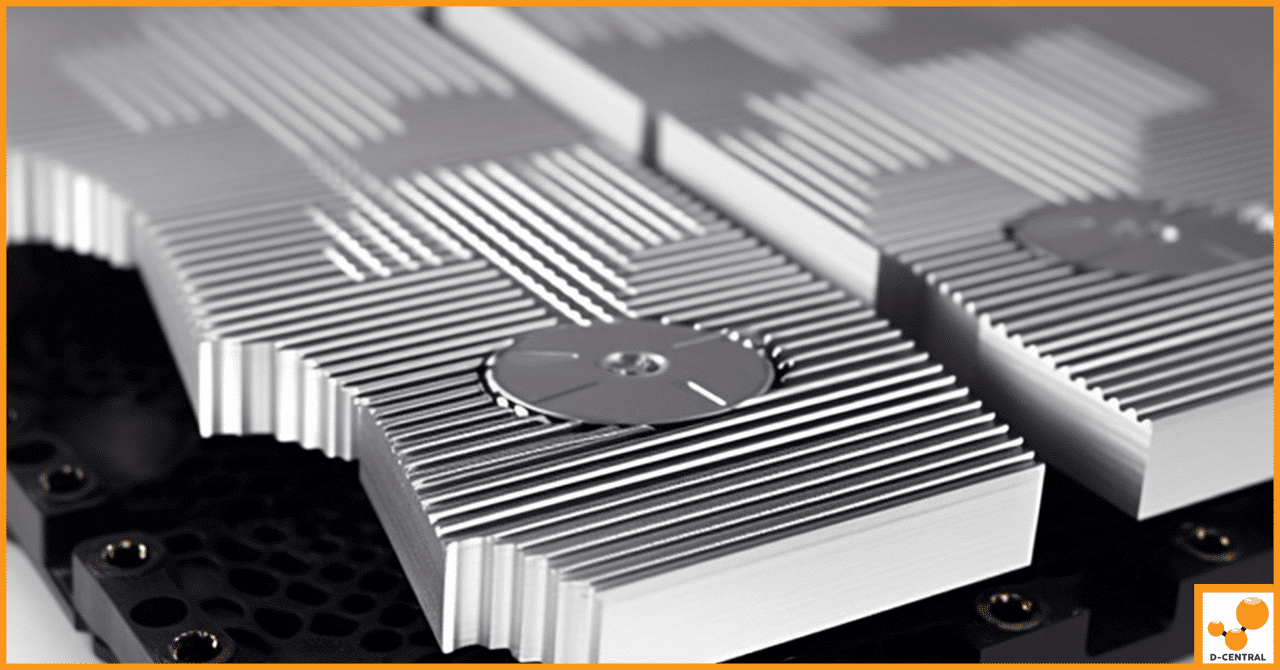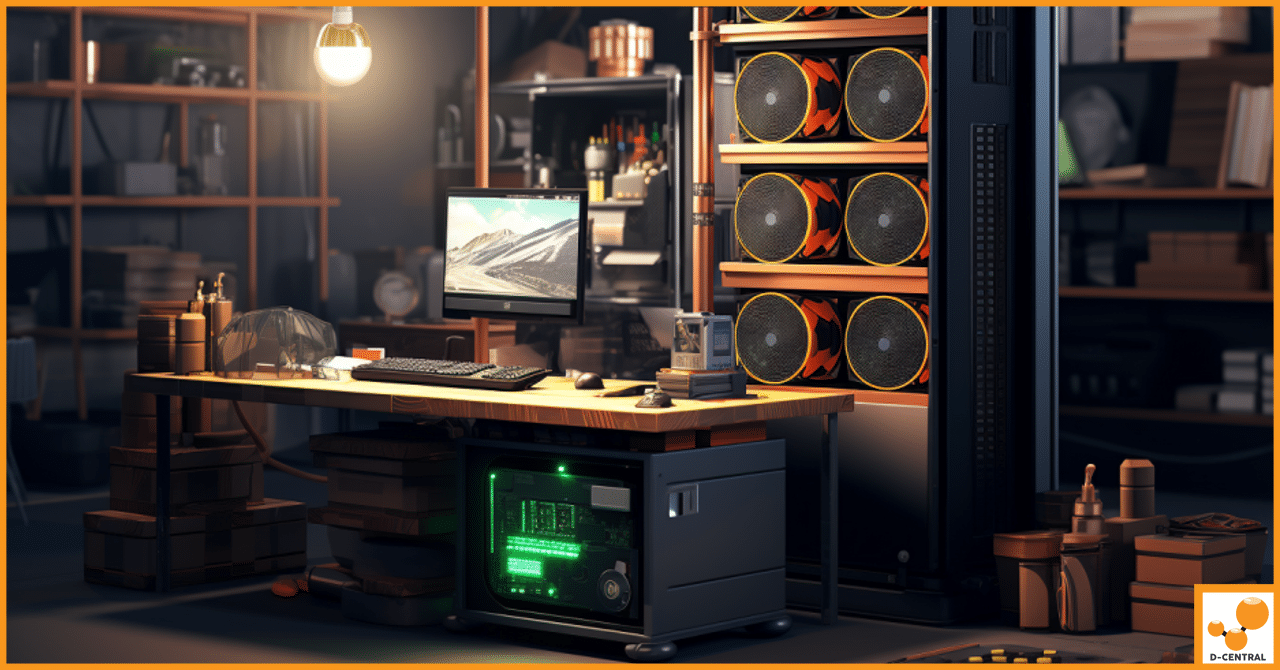
The Importance of Technical Knowledge in ASIC Miner Repairs
In the dynamic realm of cryptocurrency mining, Application-Specific Integrated Circuit (ASIC) miners stand as the linchpins of efficiency and performance.
4479 Desserte Nord Autoroute 440, Laval, QC H7P 6E2

Cryptocurrency mining with ASIC (Application-Specific Integrated Circuit) devices has become a lucrative endeavor for many. These specialized devices perform complex calculations, yielding cryptocurrency rewards for miners. However, along with high-performance capabilities, ASIC miners generate substantial amounts of heat. Efficient heat management is crucial for maintaining the stability, performance, and lifespan of these devices. Inadequate cooling can lead to overheating, malfunctions, reduced hash rate, increased power consumption, and frequent repairs. Hence, effective cooling solutions are a top priority for crypto miners.
Air cooling is the most common method used to dissipate heat generated by ASIC miners. Despite its widespread use, air cooling has its drawbacks. The cooling process is dependent on fans, which can be noisy and consume a significant amount of power. Additionally, air cooling relies on ambient temperature and humidity, factors that can vary widely based on location and season. The air cooling process can also lead to dust accumulation and oxidation on chips and heat sinks, negatively impacting the miner’s hash rate and efficiency. These limitations have led crypto miners to seek alternative cooling solutions that offer better results and lower costs.
Whatsminer Upgraded Hydro Heatsinks is an innovative product that utilizes water cooling to enhance the performance and efficiency of ASIC miners. These specially designed heat sinks offer a promising alternative to traditional air cooling, addressing its limitations and providing an optimal solution for keeping ASIC miners cool. In this article, we will explore how Whatsminer Upgraded Hydro Heatsinks work, the advantages of water cooling over air cooling, and a comparison to another cooling solution, immersion cooling, to help crypto miners make informed decisions when upgrading their heat sinks.
Whatsminer Upgraded Hydro Heatsinks are designed to be compatible with specific Whatsminer models, including the M21S and M53 models. These powerful SHA-256 miners can mine various cryptocurrencies, such as Bitcoin and Bitcoin Cash. Boasting a high hash rate of up to 226 TH/s and low power consumption of 3000 W, these miners are popular choices in the crypto mining community. However, the high performance of these miners also generates significant heat, necessitating an effective cooling solution like the Whatsminer Upgraded Hydro Heatsinks.
Whatsminer Upgraded Hydro Heatsinks employ water cooling technology to dissipate heat generated by the mining chips. The original air-cooled heat sinks are replaced with water-cooled ones, which offer better thermal conductivity and corrosion resistance. These water-cooled heat sinks are connected to a liquid cooling system that circulates deionized water through a pump, a radiator, and a fan.
Deionized water, used in the cooling system, is free from impurities that may clog or corrode the system. The anodized heat sinks have a protective layer that prevents oxidation and improves heat transfer, ensuring optimal cooling performance.
Water cooling offers several advantages over traditional air cooling for mining rigs. Due to its high thermal conductivity, water can transfer heat more effectively and evenly than air, allowing for more efficient heat diffusion from various components. This superior heat transfer results in lower chip temperatures, improving the hash rate and efficiency of the miners.
Water cooling also enables better overclocking potential, as it can maintain optimal chip temperatures even when running at higher frequencies and voltages. Additionally, the water cooling system operates with less noise compared to air cooling, as it requires fewer fans, contributing to a quieter and more comfortable mining environment. Lastly, water cooling can help prevent dust accumulation and oxidation on the chips and heat sinks, factors that can negatively impact the performance and lifespan of mining rigs.
Whatsminer Upgraded Hydro Heatsinks can substantially improve the performance and efficiency of ASIC miners. By lowering the chip temperature by up to 20 degrees Celsius, they enhance the hash rate and overall efficiency of mining rigs. The high thermal conductivity of water facilitates rapid and even heat diffusion from various components, ensuring optimal cooling performance. Furthermore, water cooling enables better overclocking potential, allowing miners to run at higher frequencies and voltages without the risk of overheating. Overall, these advantages contribute to a more efficient and productive mining operation.
One of the major drawbacks of air cooling is the noise generated by the fans required for heat dissipation. Whatsminer Upgraded Hydro Heatsinks significantly reduce noise levels by up to 10 dB, creating a more peaceful and comfortable mining environment. Water cooling relies on fewer fans, operating at lower RPMs and generating less noise than multiple fans blowing directly at the heat sinks. This reduction in noise is beneficial not only for the comfort of those operating the mining rigs but also for maintaining a quieter environment in residential or shared spaces.
Dust accumulation and oxidation on chips and heat sinks can adversely impact the performance and lifespan of mining rigs. Whatsminer Upgraded Hydro Heatsinks effectively prevent these issues, ensuring the longevity and reliability of the miners. The use of deionized water and anodized heat sinks in the water cooling system plays a crucial role in addressing these concerns. The smooth and durable anodized heat sinks feature a protective layer that prevents oxidation and improves heat transfer. Deionized water, free of impurities, prevents clogging and corrosion within the system, further safeguarding the miner’s performance and lifespan.
Immersion cooling, also known as liquid submersion cooling, is another alternative to traditional air cooling that has gained traction among some crypto miners. This cooling method involves submerging mining rigs in a thermally conductive liquid bath, typically dielectric oil. The heat generated by the rigs is transferred to the dielectric oil, which dissipates the heat away from the equipment. To circulate the oil, pumps are used, while external radiators and fans help remove the heat from the system. Immersion cooling offers several advantages over air cooling, including lower noise levels, higher density, and better overclocking potential.
While immersion cooling has some benefits, it also comes with disadvantages when compared to water cooling. Here are some of the main pros and cons of each solution:
Pros of immersion cooling:
Cons of immersion cooling:
While immersion cooling offers some advantages over air cooling, water cooling remains a more efficient and cost-effective solution for most crypto miners. The scalability, flexibility, and sustainability of water cooling make it an optimal choice for a wide range of mining scenarios and environments.
When it comes to temperature reduction capabilities, both immersion cooling and water cooling outperform traditional air cooling. Immersion cooling can lower chip temperatures by up to 40 degrees Celsius, enabling higher overclocking and performance. Water cooling, on the other hand, can reduce chip temperatures by up to 20 degrees Celsius, which still significantly improves the hash rate and efficiency of mining rigs. While immersion cooling offers superior temperature reduction, water cooling provides a more practical and efficient cooling solution for most mining applications.
Cost, complexity, and risk are essential factors to consider when comparing immersion cooling and water cooling. Immersion cooling is generally more expensive than water cooling due to the need for additional components such as tanks, pumps, radiators, filters, sensors, and dielectric oil. Additionally, immersion cooling requires modifying the hardware to withstand submersion in fluid, increasing complexity and posing potential risks like leaks or spills.
Water cooling, in contrast, is more cost-effective and straightforward, as it involves connecting water-cooled heat sinks to a liquid cooling system. The risk of leakage or corrosion is also lower with water cooling, provided the system is properly sealed and maintained.
Scalability, flexibility, and sustainability are crucial factors in choosing the right cooling solution for crypto mining operations. Water cooling offers better scalability and flexibility than immersion cooling, as it can be easily installed and adapted to different configurations and layouts. Additionally, water cooling systems can be expanded or upgraded to accommodate increasing mining capacities.
In terms of sustainability, water cooling holds an advantage over immersion cooling. Water cooling uses less water and energy, produces less waste, and has a smaller environmental impact. Immersion cooling, while offering some benefits like higher density and reduced noise, involves using large amounts of dielectric oil, which can be more challenging to manage and dispose of in an environmentally friendly manner.
Based on these factors, water cooling emerges as the more practical and efficient cooling solution for most crypto miners. Its balance of cost-effectiveness, scalability, flexibility, and sustainability make it an optimal choice for a wide range of mining scenarios and environments.
Water cooling with Whatsminer Upgraded Hydro Heatsinks offers several benefits for crypto miners seeking to optimize their mining operations. By efficiently dissipating heat, water cooling improves the performance, efficiency, and lifespan of mining rigs. It also significantly reduces noise levels, creating a more comfortable mining environment. Furthermore, water cooling prevents dust accumulation and oxidation, ensuring the longevity and reliability of mining equipment.
Investing in water cooling with Whatsminer Upgraded Hydro Heatsinks provides long-term advantages for crypto miners. By maintaining optimal operating temperatures, water cooling enables miners to achieve higher overclocking potential and maximize their rigs’ performance. The reduced maintenance requirements, decreased risk of hardware failure, and improved energy efficiency all contribute to lowering the total cost of ownership for mining rigs. These long-term advantages make water cooling a smart investment for crypto miners looking to stay competitive in the rapidly evolving mining landscape.
Water cooling with Whatsminer Upgraded Hydro Heatsinks not only enhances the efficiency of mining operations but also promotes an eco-friendly approach to crypto mining. By using less water and energy, water cooling minimizes the environmental impact and reduces the associated operational costs. As the cryptocurrency industry faces increasing scrutiny and pressure to adopt greener practices, utilizing an efficient and eco-friendly cooling solution like water cooling can help miners future-proof their operations and maximize profits.
In conclusion, water cooling with Whatsminer Upgraded Hydro Heatsinks is the optimal choice for crypto miners looking to improve their mining rigs’ performance, efficiency, and longevity while minimizing noise and environmental impact. By investing in water cooling, miners can stay ahead of the competition, reduce operational costs, and maximize profits in a sustainable and responsible manner.
Q: What are the limitations of air cooling for ASIC miners?
A: Air cooling has several limitations, including dependency on fans, which can be noisy and consume significant power. It is also influenced by ambient temperature and humidity variables, and it can lead to dust accumulation and oxidation on chips and heat sinks, which may negatively impact the miner’s hash rate and efficiency.
Q: What are the advantages of water cooling over air cooling?
A: Water cooling offers several advantages over air cooling. It provides better thermal conductivity, allowing for more efficient heat diffusion from components. This can result in improved hash rate and efficiency, better overclocking potential, and less noise. Additionally, water cooling helps prevent dust accumulation and oxidation on chips and heat sinks, maintaining optimal performance.
Q: What is immersion cooling?
A: Immersion cooling, also known as liquid submersion cooling, involves submerging mining rigs in a thermally conductive liquid bath, typically dielectric oil. The heat generated by the rigs is transferred to the dielectric oil, which dissipates the heat away from the equipment, keeping it cool.
Q: What are the pros and cons of immersion cooling compared to water cooling?
A: The pros of immersion cooling include lowered chip temperature, enabling higher overclocking and performance, increased density of mining rigs, and reduced noise and vibration. However, immersion cooling has higher cost, complexity, and risk compared to water cooling. It also requires more challenging maintenance and repair processes.
Q: Which is the better cooling solution for most crypto miners: immersion cooling or water cooling?
A: Water cooling is generally considered the better cooling solution for most crypto miners due to its cost-effectiveness, scalability, flexibility, and sustainability. While immersion cooling offers benefits like higher density and reduced noise, water cooling remains the more practical and efficient choice for a wide range of mining scenarios and environments.
DISCLAIMER: D-Central Technologies and its associated content, including this blog, do not serve as financial advisors or official investment advisors. The insights and opinions shared here or by any guests featured in our content are provided purely for informational and educational purposes. Such communications should not be interpreted as financial, investment, legal, tax, or any form of specific advice. We are committed to advancing the knowledge and understanding of Bitcoin and its potential impact on society. However, we urge our community to proceed with caution and informed judgment in all related endeavors.
Related Posts

In the dynamic realm of cryptocurrency mining, Application-Specific Integrated Circuit (ASIC) miners stand as the linchpins of efficiency and performance.

Are you looking for an attractive investment opportunity that could yield high returns? If so, investing in Bitcoin mining stocks

The landscape of Bitcoin mining is undergoing a transformative shift, especially when it comes to mining from the comfort of